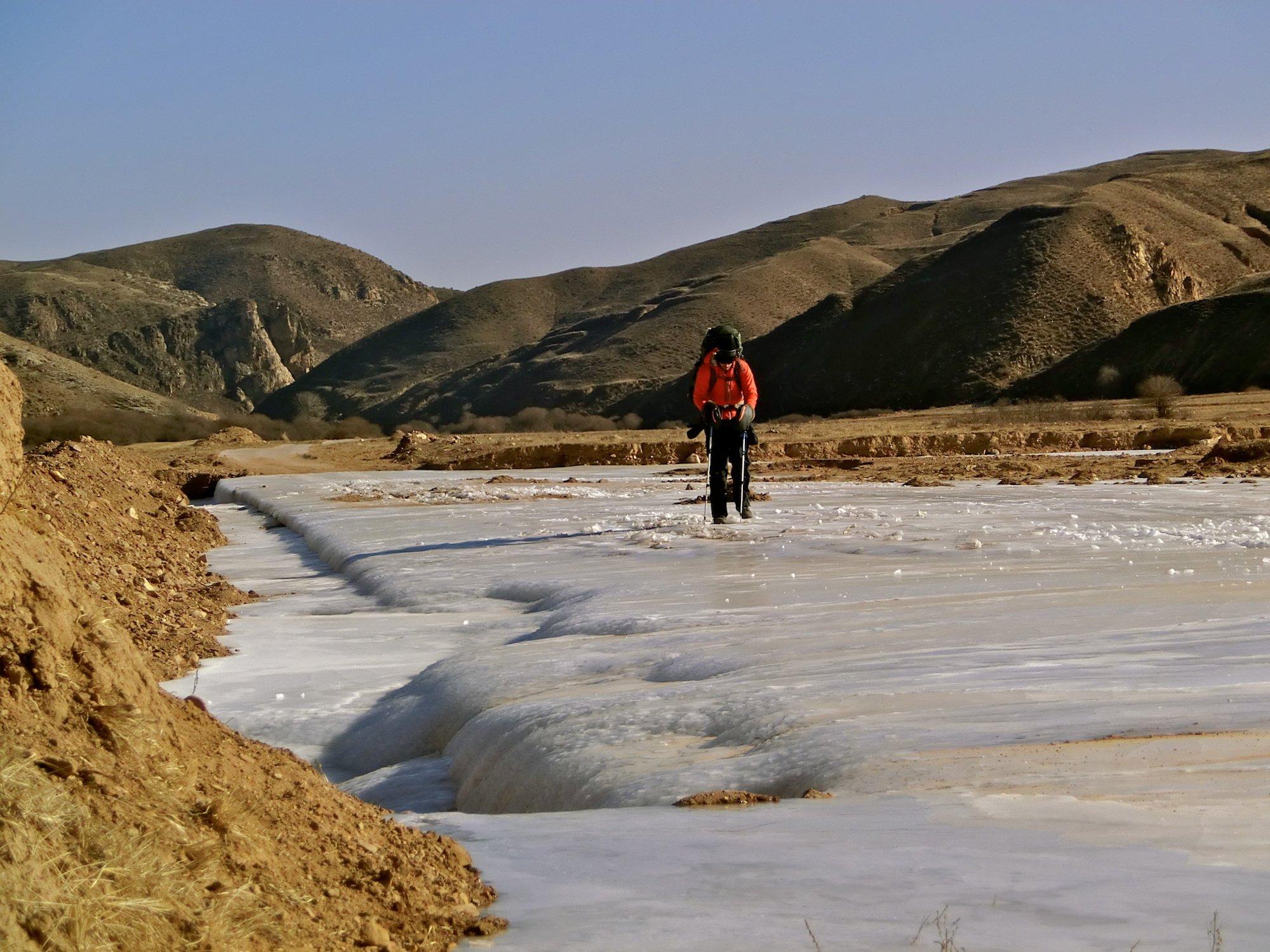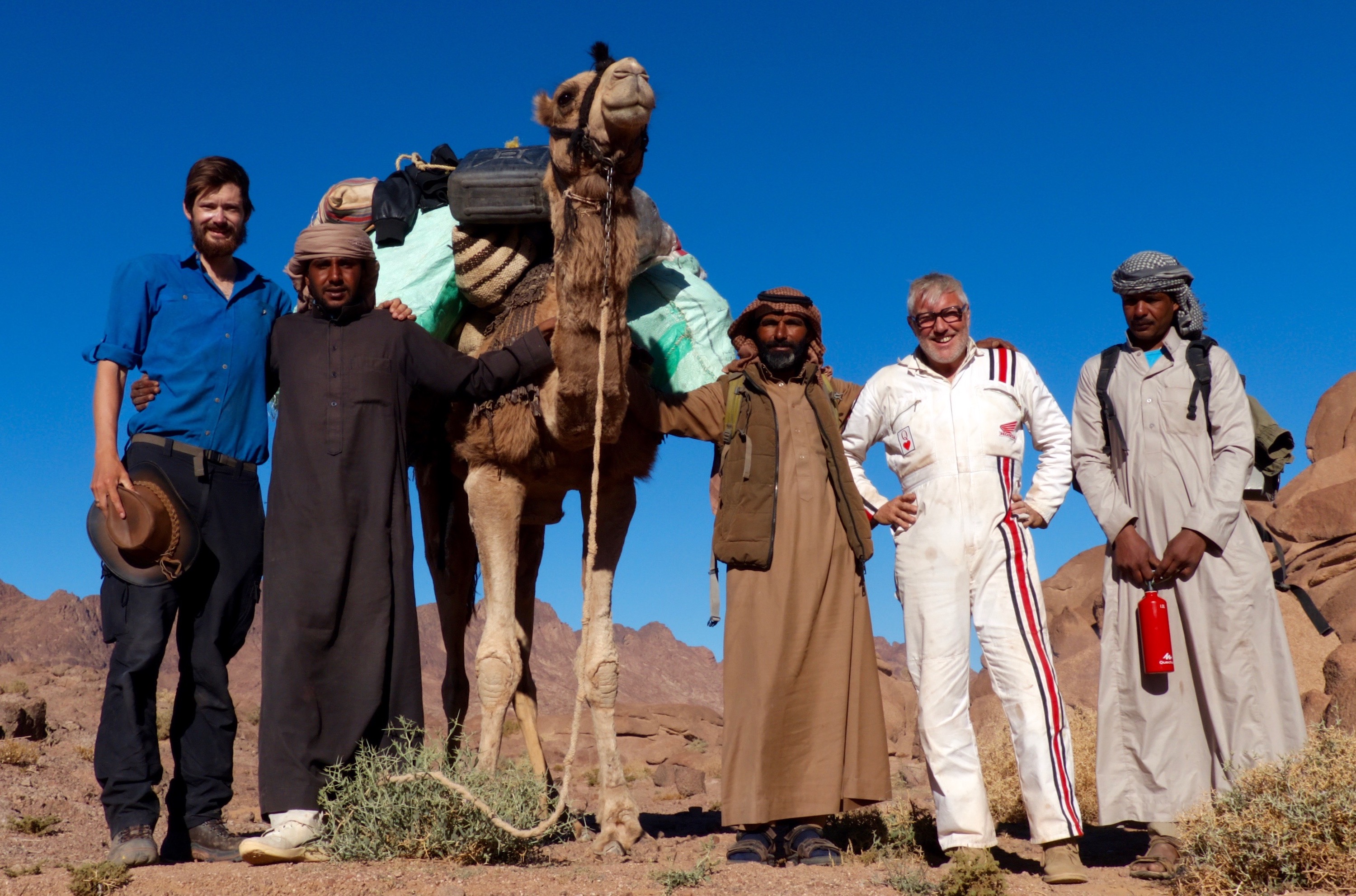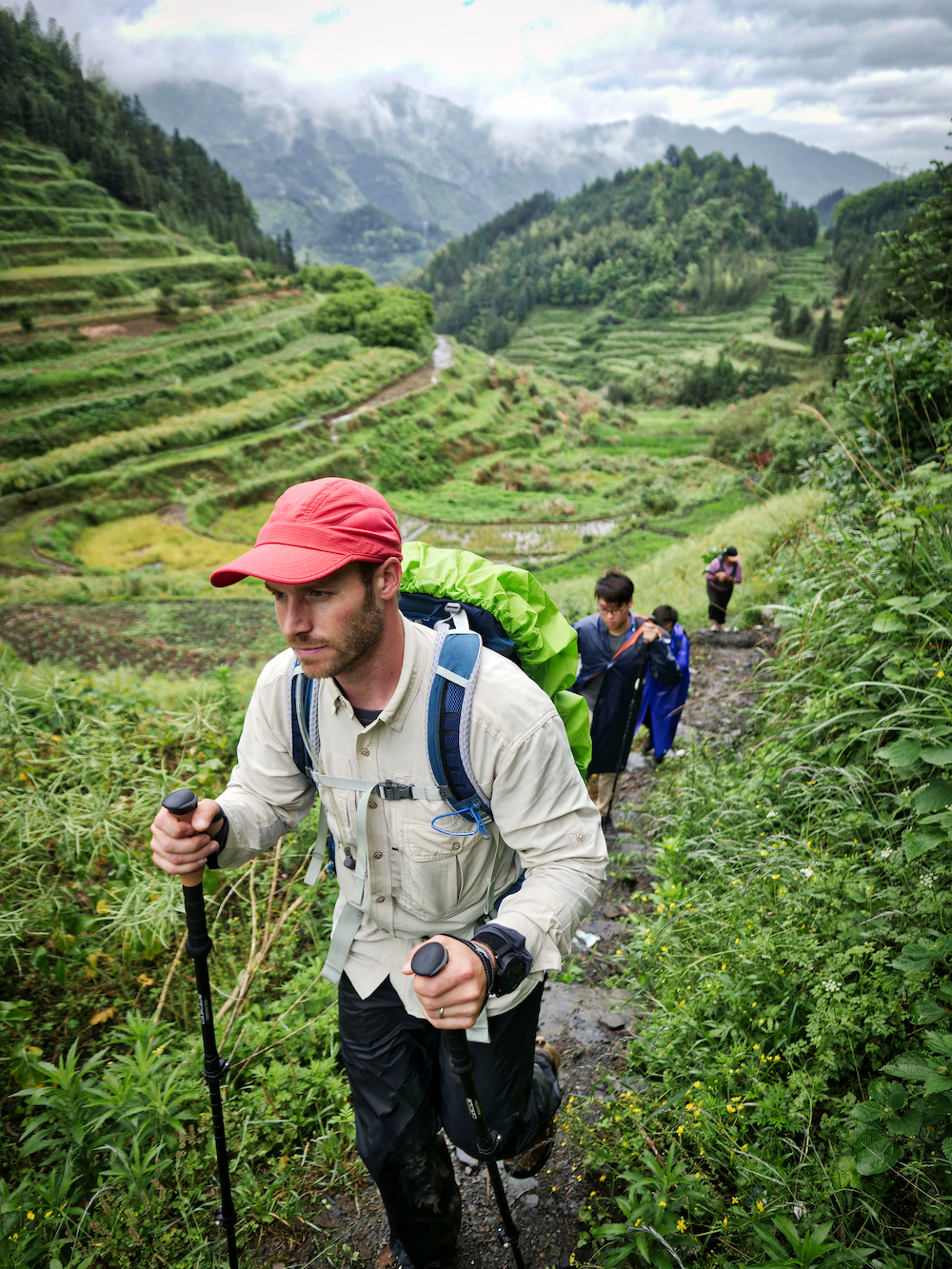Leon McCarron is a Northern Irish storyteller and adventurer, best known for his work “seeking out stories of humanity and nuance in parts of the world that are often demonised or misunderstood by Western media”. He has travelled through the Holy Land, Iraqi Kurdistan, Kosovo and Armenia on foot, as well as walked the length of China. In recent years, he has become involved with creating long distance hiking trails in lesser-visited parts of the world.
Here, as part of our Adventure Open Mic series, Leon opens our eyes to what’s involved in creating a hiking trail, the impact on local communities and why a good footpath has a lot in common with a good book. Take it away, Leon:
I’m not really sure how I got involved with creating walking trails! I’ve walked on a lot of hiking paths and then I wrote a book about walking around the Middle East, from Jerusalem to Mount Sinai. I was using a series of new hiking trails in the region that were either nearly finished or just finished by the time I walked them. That meant I got quite closely connected with various people who worked on those trails in Jordan, the West Bank and Sinai. My book was about the region, but it was also partly about how the trails developed and what they brought to the community.
Then from that a friend of mine, who’s a business man between the UK and China, approached me to ask if I was interested in bringing that sort of knowledge and trail work to China. We’d met when I was walking through China years ago, so it was pretty out of the blue. I signed up someone else who’d been involved in trail work in the Middle East and have spent this year creating a 100km long hiking trail in central China: Xuefeng Mountain Trail.

The trail is the first of its kind really, there’s not a huge culture of recreational hiking in China. There are some paths, that sort of thing, but there’s nothing quite like this. We’re really trying to create it to the same international standards as anywhere else in the world. It’s a window into an unseen side of China. The trail is very rural, very agricultural, it’s mountainous, small, remote – some of the villages had no access to the outside world until recently. They speak their own dialects, have their own customs and there are no written histories, it's all oral traditions through song and folklore. The trail moves through this culture.
It starts quite high in the mountains and progresses down to a wetlands area 100km later. It’s a type of China that’s so far away from the Beijing, Shanghai, mega city experience. I wanted to show that there is this very different side to China. It’s such a big place there are still a lot of empty rural areas.
“…maybe I have a role as an author of these trails, but it is a collaborative project. I’m part of it, but without all the local people to make it work, it just wouldn’t exist.”
After the Xuefeng Mountain Trail, I also started working in northern Iraq on another hiking trail. Compared to China, it is a differently complex place to try to create a trail system. The Iraqi trail is in a much earlier stage of development, but our mission is to eventually create a continuous long distance hiking trail, like the one in Jordan. We’d like to give people who come to that part of the world something adventurous to do and directly contribute to rebuilding an economy that’s taken a lot of hits over the years.

There are many ways to make hiking trails, but the process that I’m most interested in is using pre-existing pathways. Most rural or wilderness areas have paths that people have always used one way or another – whether it’s farmers going between villages or old trade paths, pilgrimage ways or shepherds’ tracks. There’s always something. A lot of the time those paths make the most interesting modern day hiking trails, because they’re the most ostensible way to go through a landscape.
All over the world – in China, Iraq, Europe, the US – these paths are increasingly getting forgotten about because people use roads. They don’t travel on foot out of necessity any more. A big part of the process of designing a long distance hiking trail is mapping out all pre-existing pathways, even if they’re overgrown or unused. We can try to bring them back to life and see where they go, then start to create a story around that.
“I’m interested in it as a way to tell a story about a place. The best trails that I’ve walked on have had that feel to it, that narrative.”
I’m really interested in how trails are a form of storytelling. If a trail is created well, and interacts well with the landscape and the community, then someone hiking it will experience it the same way as you would read a book. A trail has all these different phases to it, these different acts, just like a book. You learn. You might move from high to low, from mountains to the valley. Or you might experience one culture then move through to another, from river people to mountain people, to farmers to a city. If you do all that, it’s sort of akin to how you read a story. You learn a little more with each step.
Obviously, I’m not a trail developer. I have no interest really in the landscaping of an area to create a trail, or doing it just for the wilderness aspect. I’m interested in it as a way to tell a story about a place. The best trails that I’ve walked on have had that feel to it, that narrative.

It is so important to get the local communities involved, because anyone like me who comes in from the outside and works on many development projects or trails will eventually go back. I’m not going to spend my whole life in central China… probably! Eventually I will leave and as soon as I leave or my team leaves, if the local people aren’t involved from the outset, the trail will just die a death. If there aren’t local stakeholders who are as enthusiastic about the whole project as I am, it just won’t keep going. It needs to be locally owned so that people want it to survive and try to maintain it and keep it in the state that it should be.
Local communities are essential. I think it can seem like I’m driving all of this and yes, maybe I have a role as an author of these trails, but it is a collaborative project. I’m part of it, but without all the local people to make it work, it just wouldn’t exist.
What we find a lot in China is it’s so hard to make a living in the traditional agricultural world and a lot of the young people have left. There is a lot of opportunity to develop an adventure tourism industry which creates a cash economy that might not otherwise be there. It creates employment. It gives young people a reason to stick around, whereas they might otherwise have gone to bigger cities and left – so you retain this cultural connection of language and everything else.
“If these areas were left untouched, let’s say, they may be in danger of just disappearing off the map forever, because communities are no longer able to survive there.”
I’ve wondered in the past about whether I should feel guilty about bringing people into these untouched ares. But I think I decide to work in the areas that I know will benefit from people arriving. Of course tourism leaves a footprint one way or another, but the work that I’m doing on the trails has to be done sustainably. It has to be done in conjunction with the local environment, in a way that protects it. The communities that we work with will benefit hugely from having visitors come in. So, yes, it changes a place, but my hope is that it’s changing in a positive sense. If these areas were left untouched, let’s say, they may be in danger of just disappearing off the map forever, because communities are no longer able to survive there.
Been inspired to go on a hiking holiday? We might just have the long distance human-powered adventure you’re looking for… Or, read more about Leon McCarron’s work on his website.


